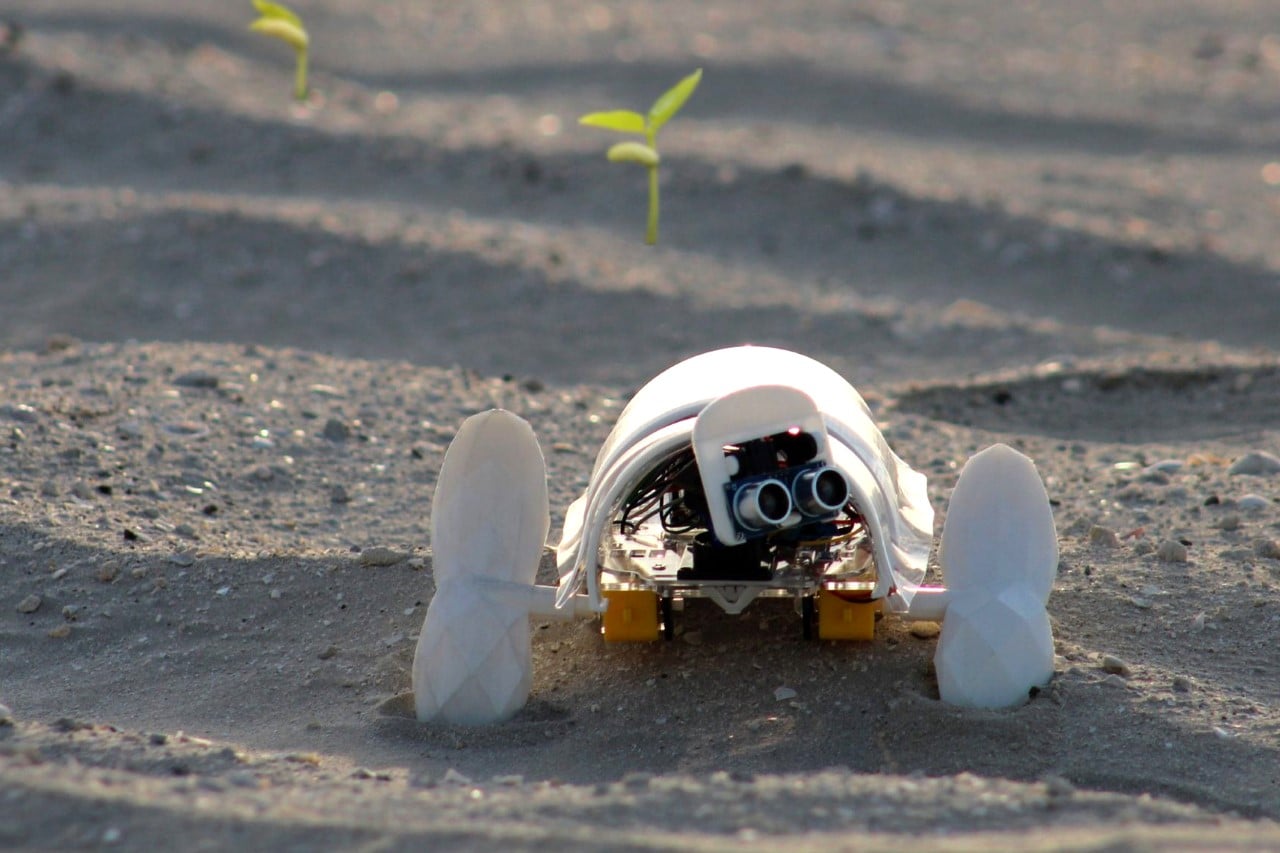
A graduation project from Mazyar Etehadi of the Dubai Institute of Design and Innovation, A’seedbot is a self-operating drone that manually plants seeds across the desert terrain. With an end goal of turning uninhabitable sandy terrain into a lush green landscape, the A’seedbot drives around autonomously through the day, pulling power from the solar panels mounted on its upper surface.
With an undeniably strong Wall-E vibe, the A’seedbot’s prime duty is to help cultivate barren land. Operating autonomously and entirely alone (I’m pretty sure Pixar should make a movie on this), the A’seedbot begins its journey every morning, paddling across the sand with its propeller-style feet that push it forward, while the rear end of the robot helps plant seeds into the soft terrain.
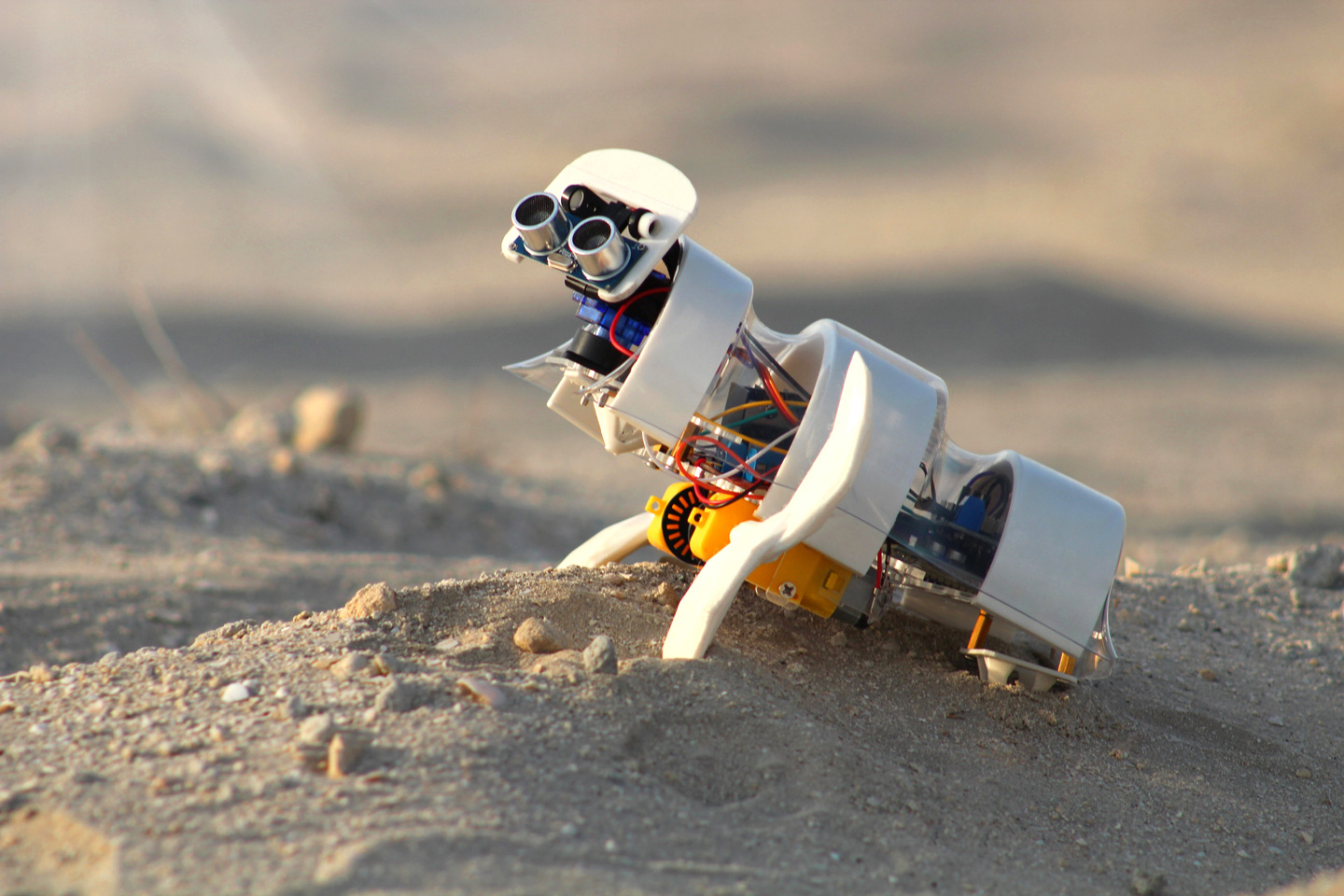
“The robot is equipped with solar panels to charge during the day and navigate its way through the terrain at night, to identify fertile areas, report on them as well as plant seeds based on the data retrieved from its sensors and navigation system”, explains designer Mazyar Etehadi.
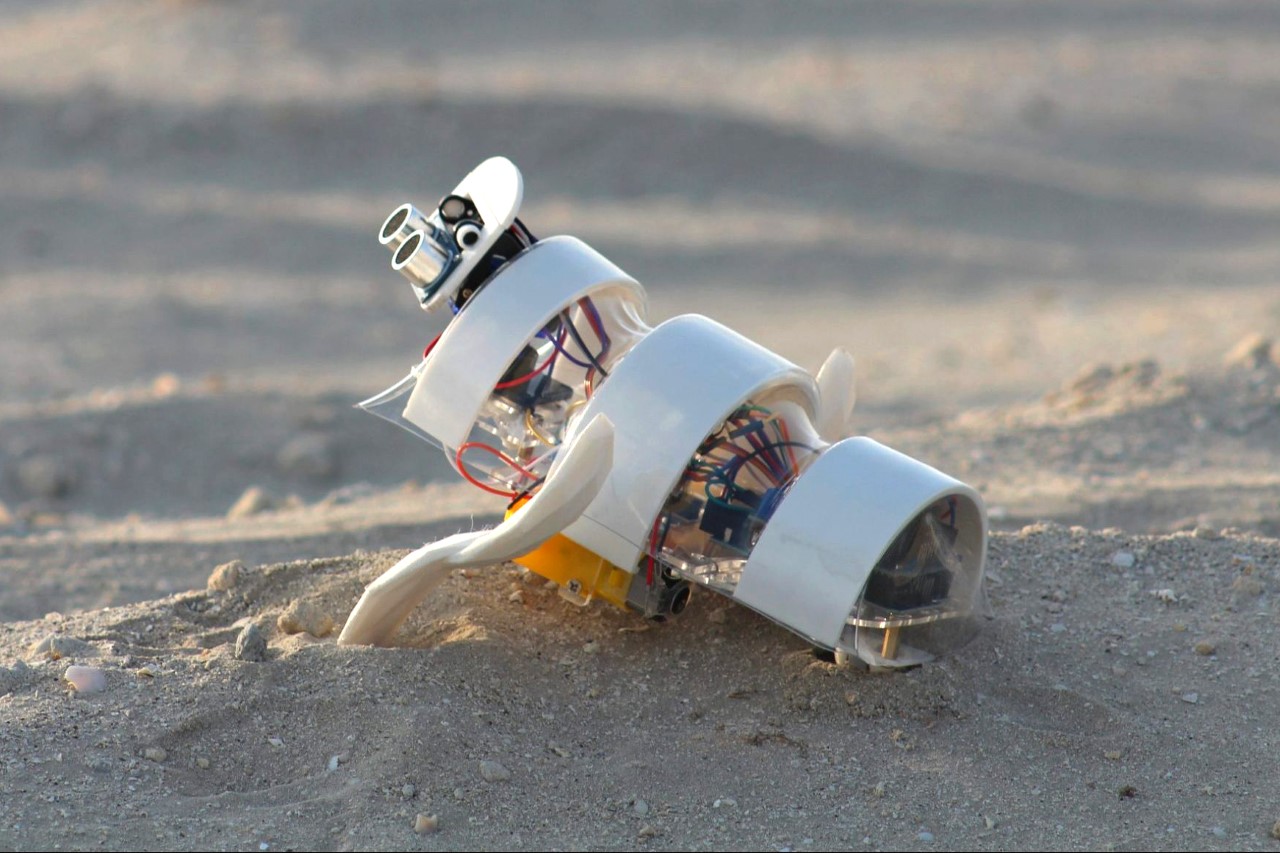
What’s so interesting about the A’seedbot is its unique shape, designed as a prime example of ‘Form follows Function’. The robot’s length-wise design can be separated into its 3 parts, ‘Seeing’, ‘Navigating’ and ‘Planting’. Two ultrasound sensors on the front allow the robot to assess the terrain in front of it, while a movable head lets it look in various directions to choose the right path. Once decided, paddle-shaped legs help the A’seedbot push itself forward and even change directions, looking almost like a tiny little seal on land. Lastly, the end of the robot rests against the ground, promptly pushing seeds into the sand wherever the robot deems necessary. Its internal processing unit helps the robot understand terrain, decide the locations to plant seeds, and monitor them every few days, while the solar panels on the top help the robot sense how harsh the sun is… while conveniently also providing it with power, that gets stored in the A’seedbot’s internal battery. Deploy enough of these robots and they could potentially help cultivate parts of a desert, turning them into oases of greenery!
Designer: Mazyar Etehadi
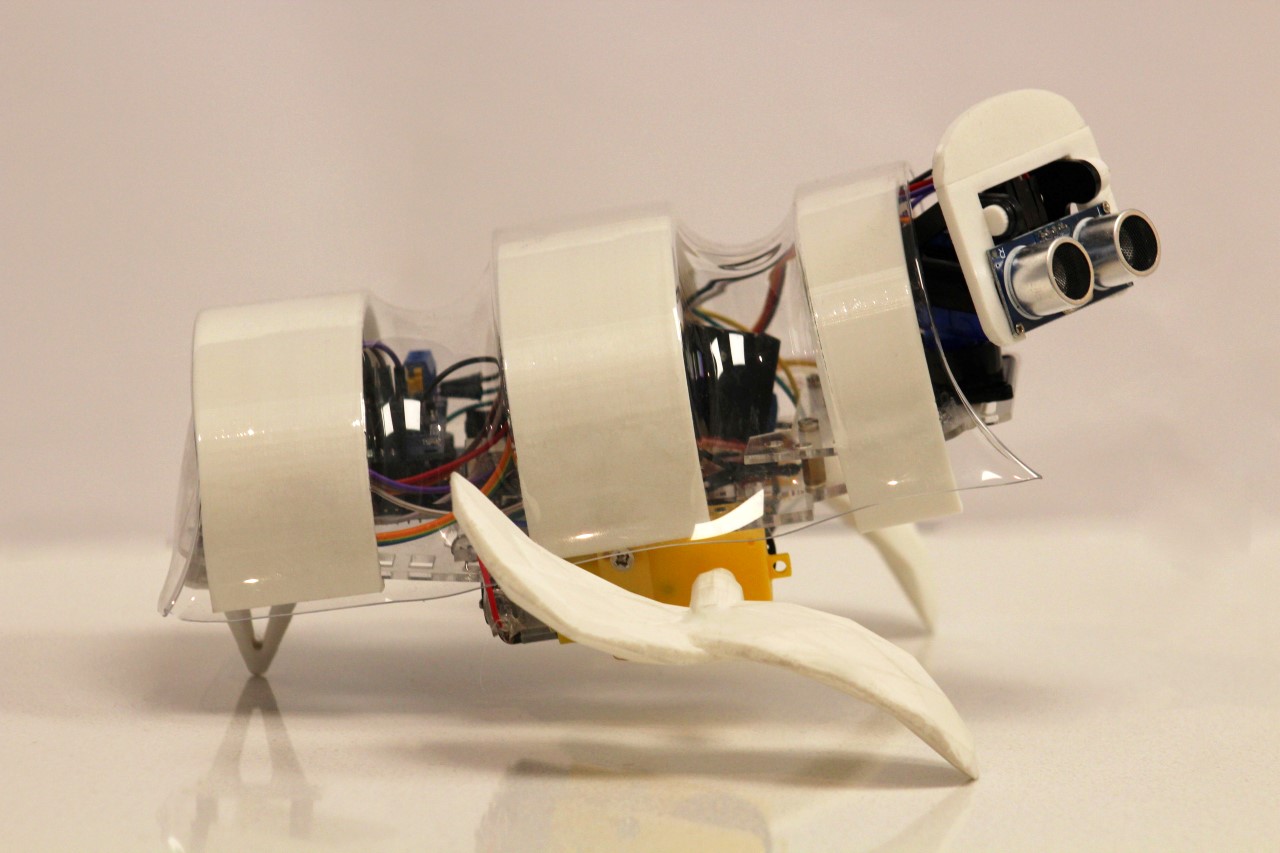
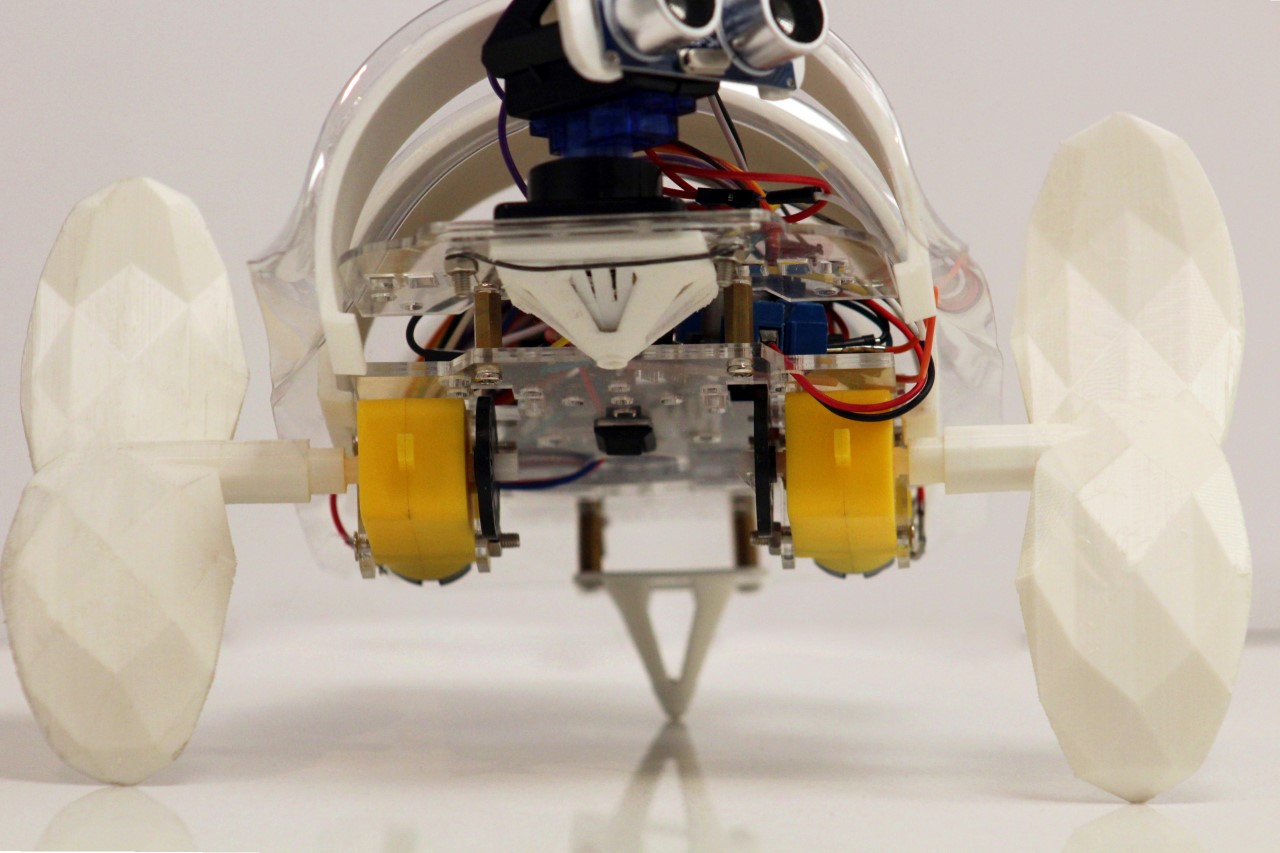
The post Tiny autonomous solar-powered robot roams around on deserts, planting seeds to cultivate greenery first appeared on Yanko Design.